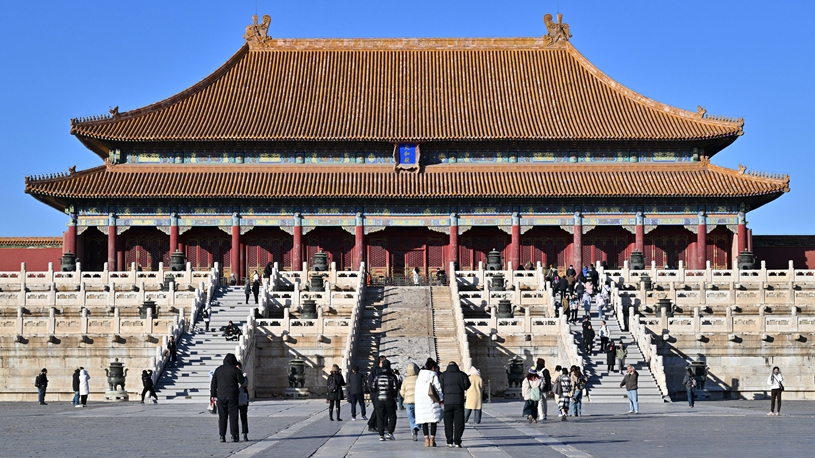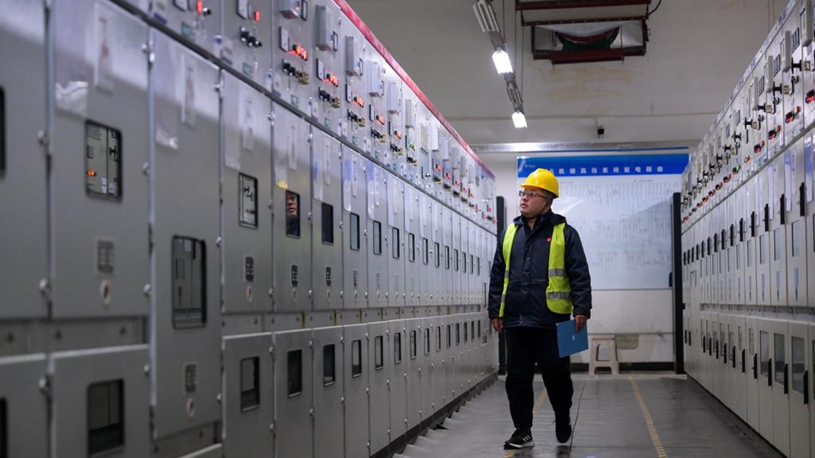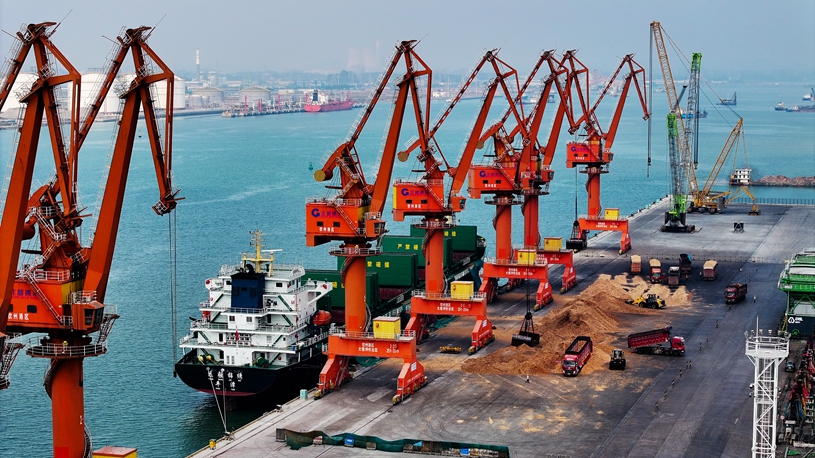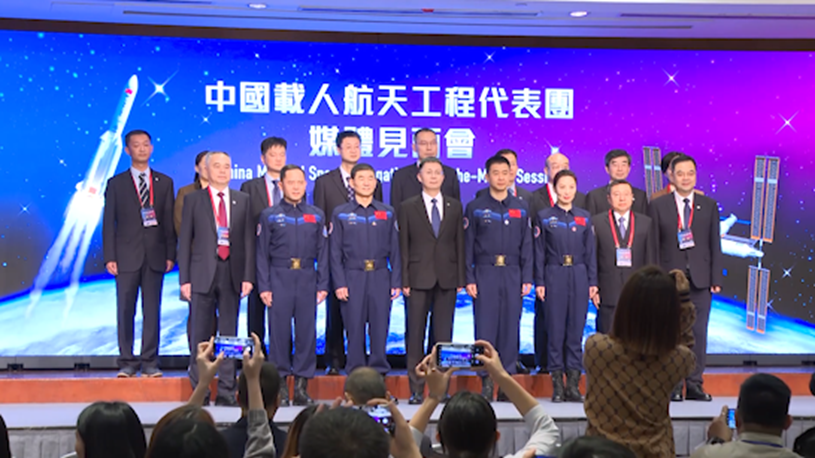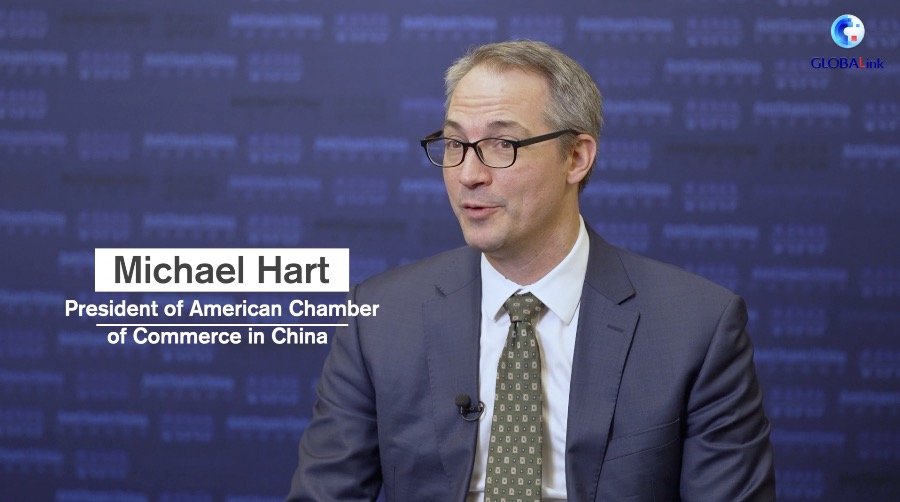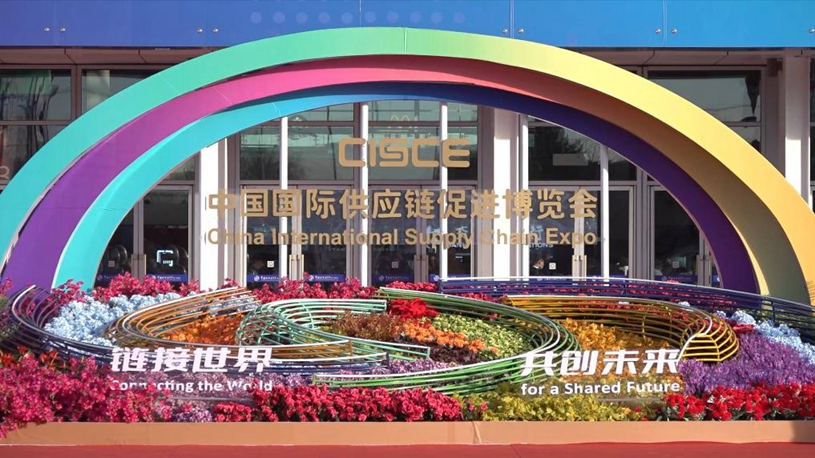* The 28th meeting of the Conference of the Parties to the United Nations Framework Convention on Climate Change will be a milestone where the world takes stock of its progress on the Paris Agreement, and the outcome will help pool global efforts against climate change.
* The age of global warming had ended and the "era of global boiling" had arrived, the United Nations has warned.
* With total installed capacity of renewable energies reaching 1,213 gigawatts in 2022, China has become a global leader in utilizing green and low-carbon energy sources.
* Over the years, China has been promoting cooperation on climate change under the Belt and Road Initiative framework, providing support for other developing countries to better their abilities in dealing with climate change.

This aerial photo taken on Aug. 20, 2022 shows Saihanba National Forest Park in Chengde City, north China's Hebei Province. (Photo by Liu Mancang/Xinhua)
DUBAI, Nov. 30 (Xinhua) -- More than 70,000 delegates from around the world are gathering here for COP28, the United Nations climate change conference scheduled from Nov. 30 to Dec. 12.
The 28th meeting of the Conference of the Parties (COP) to the United Nations Framework Convention on Climate Change will be a milestone where the world takes stock of its progress on the Paris Agreement, and the outcome will help pool global efforts against climate change.
What has China done to address global climate challenges? The world's second-largest economy has halved carbon dioxide emission per unit of GDP, becoming a global leader in utilizing green and low-carbon energies, and actively promoting international cooperation on climate governance.
On China's remarkable achievements made in addressing climate change, Erik Solheim, former under-secretary-general of the UN and former executive director of the United Nations Environment Programme, told Xinhua on Thursday that strong environment calls from the people, dedication from China's political leadership and innovations of Chinese businesses together made all these possible.

This photo taken on March 18, 2022 shows a carbon emission supervision platform in Xiongan New Area, north China's Hebei Province. (Xinhua/Zhu Xudong)
ENERGY INTENSITY LOWERED DOWN
The age of global warming had ended and the "era of global boiling" had arrived, the United Nations has warned.
UN Secretary-General Antonio Guterres on Monday once again urged COP28 delegates to take actions before a "critical tipping point" comes.
As carbon emission is a major factor behind global warming, China has been quick in action to cut it in response.
In 2022, the country's carbon dioxide emissions per unit of GDP dropped by more than 51 percent from its 2005 level, showed figures from the 2023 annual report on China's policies and actions to address climate change.
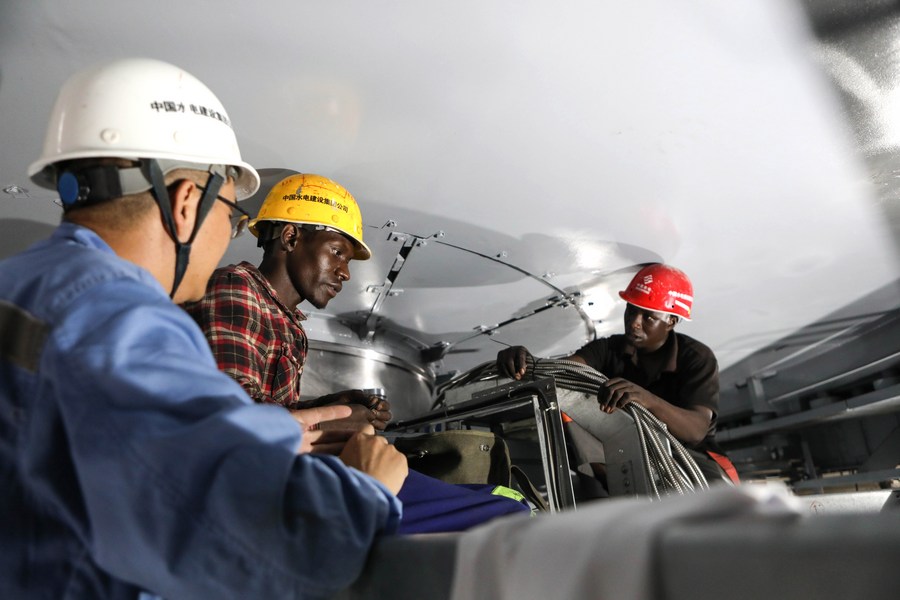
A Chinese engineer interacts with local workers at Karuma Hydropower Plant in Kiryandongo, Uganda, on Aug. 21, 2023. (Photo by Hajarah Nalwadda/Xinhua)
The report, released by the Ministry of Ecology and Environment (MEE) last month, revealed that by the end of last year the proportion of non-fossil energy consumption had reached 17.5 percent in China.
While energy intensity in the economy drops fast, efforts on afforestation are also bearing fruits. National forest coverage rate in China has reached 24.02 percent in 2021.
The country has incorporated carbon emission reduction goals into the overall planning of economic and social development, and has pledged to peak carbon emissions by 2030 and achieve carbon neutrality by 2060.
To that end, a national carbon market has been established, and by the first half of this year cumulative transaction volume of carbon emission allowances has reached 238 million tons nationwide.
Xie Zhenhua, China's special envoy for climate change, said here Thursday that as a responsible major developing country, China has always adhered to the strategic determination of climate action. The country's economic and social development has embarked on a comprehensive green transformation track.
China has become a major supplier of wind, solar power equipment and power batteries, driving down the cost of renewable energy usage, helping developing countries obtain clean, reliable and more affordable energy, he said.
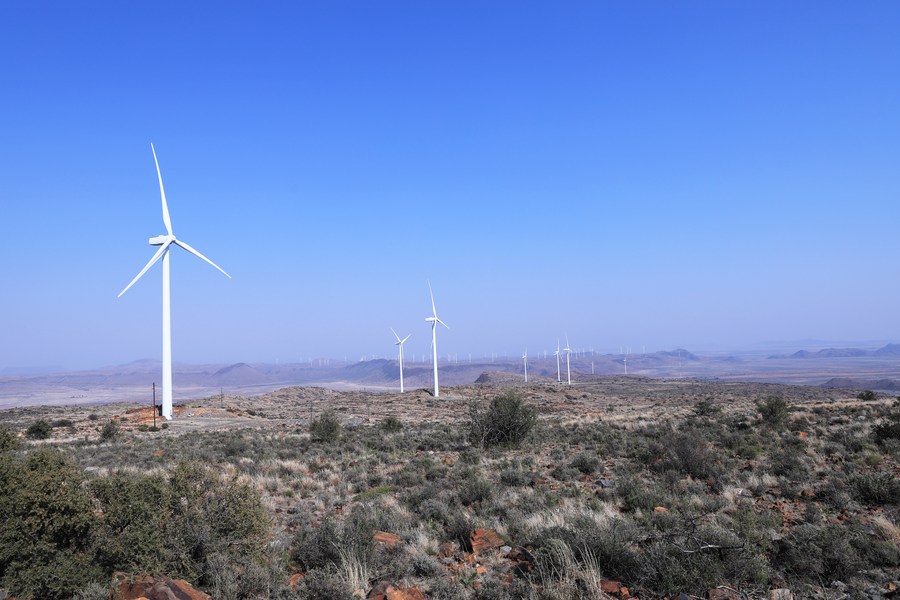
This photo taken on Aug. 10, 2023 shows wind turbines of Longyuan South Africa Renewables (Pty) Ltd.'s De Aar Wind Power Project in De Aar, South Africa. (Xinhua/Dong Jianghui)
GREEN ENERGY LEADER
With total installed capacity of renewable energies reaching 1,213 gigawatts in 2022, China has become a global leader in utilizing green and low-carbon energy sources.
The country has ranked first in the world for eight consecutive years in production and sales of new energy vehicles.
By the end of June this year, the number of new energy vehicles nationwide reached 16.2 million.
China, as a global leader in renewable energy expansion, is a powerhouse that has the ability to triple renewable power generation globally, COP28 President-Designate Sultan Ahmed Al Jaber told Xinhua recently.
"China is key in the decarbonization of the energy we use today," he said, noting that more than three-quarters of the world's solar panels, around 60 percent of the world's wind turbines, and three-quarters of the lithium-ion batteries on this planet come from China.
China is not just making what the world needs for the energy transition, its industrial strength is also bringing down costs for every nation, said Al Jaber.
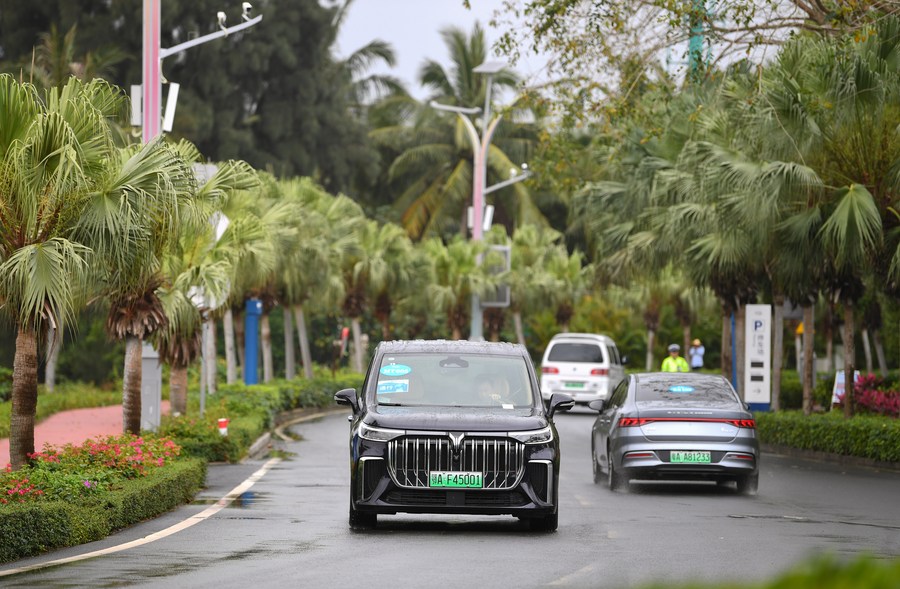
New energy vehicles run in the zero-carbon demonstration zone in Boao, south China's Hainan Province, March 28, 2023. (Xinhua/Wang Jingqiang)
CLIMATE COOPERATION PROMOTER
China is active in promoting international cooperation on addressing climate challenges and has been deeply engaged in South-South cooperation in this regard.
As of June 2023, the country has signed 46 memorandums of understanding on climate change with 39 developing countries, launched over 70 climate change mitigation and adaptation projects, and helped train more than 2,300 officials and technicians from over 120 developing countries, according to the MEE report.
And in 2017, China jointly established a ministerial conference mechanism for climate action with the EU and Canada.
Earlier this month, China and the United States released The Sunnylands Statement on Enhancing Cooperation to Address the Climate Crisis, reaffirming their commitment to work together and with other countries to address the climate crisis.
Over the years, China has been promoting cooperation on climate change under the Belt and Road Initiative (BRI) framework, providing support for other developing countries to better their abilities in dealing with climate change.
In the first half of this year, 56 percent of China's overseas energy investment in BRI participating countries went into renewable energy such as solar, wind, or hydropower projects, the COP28 president-designate has told Xinhua. (Video reporters: Yu Fuqing;video editors: Zhang Yueyuan, Li Qin, Zheng Qingbin, Lin Lin)■

